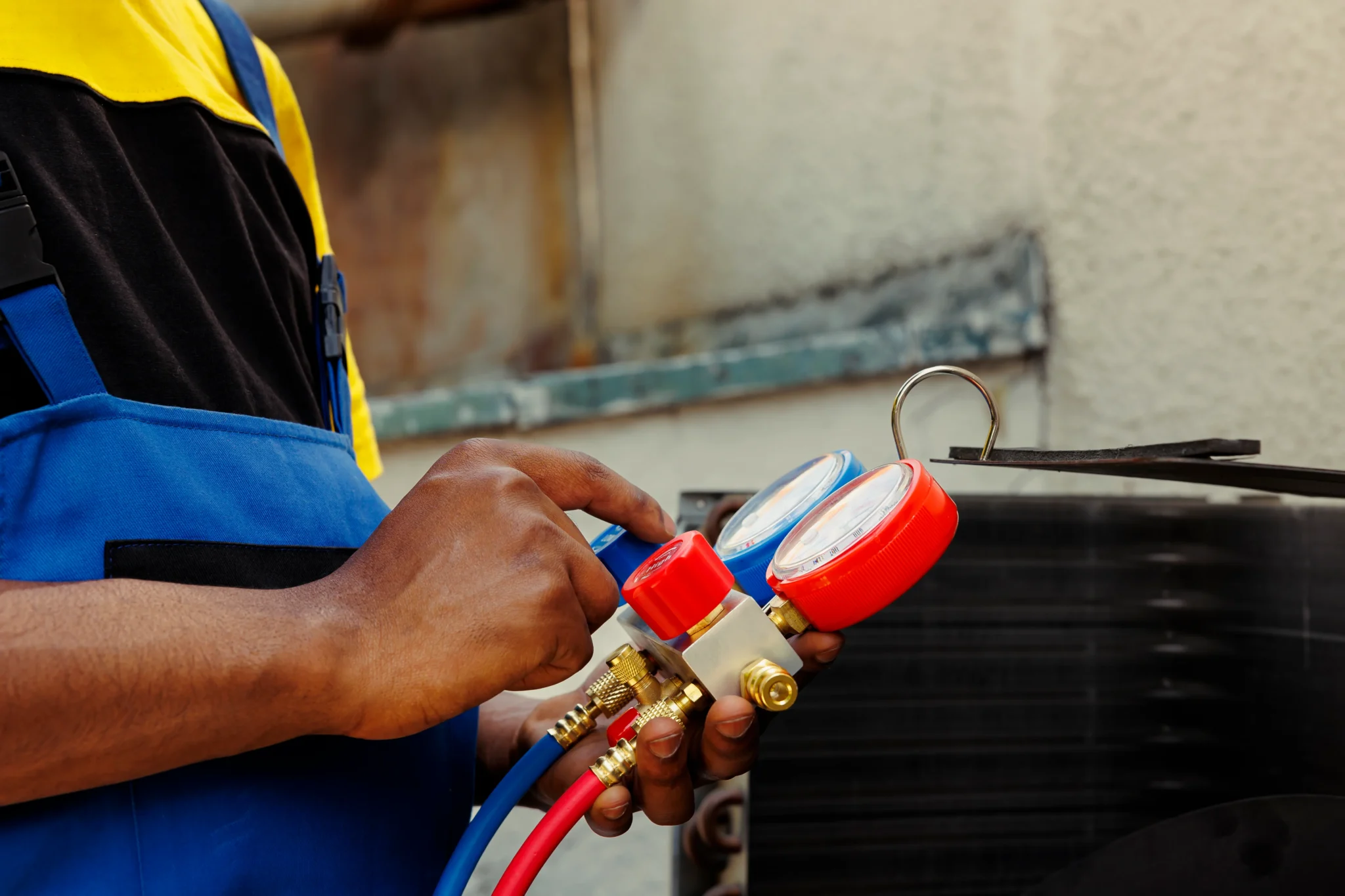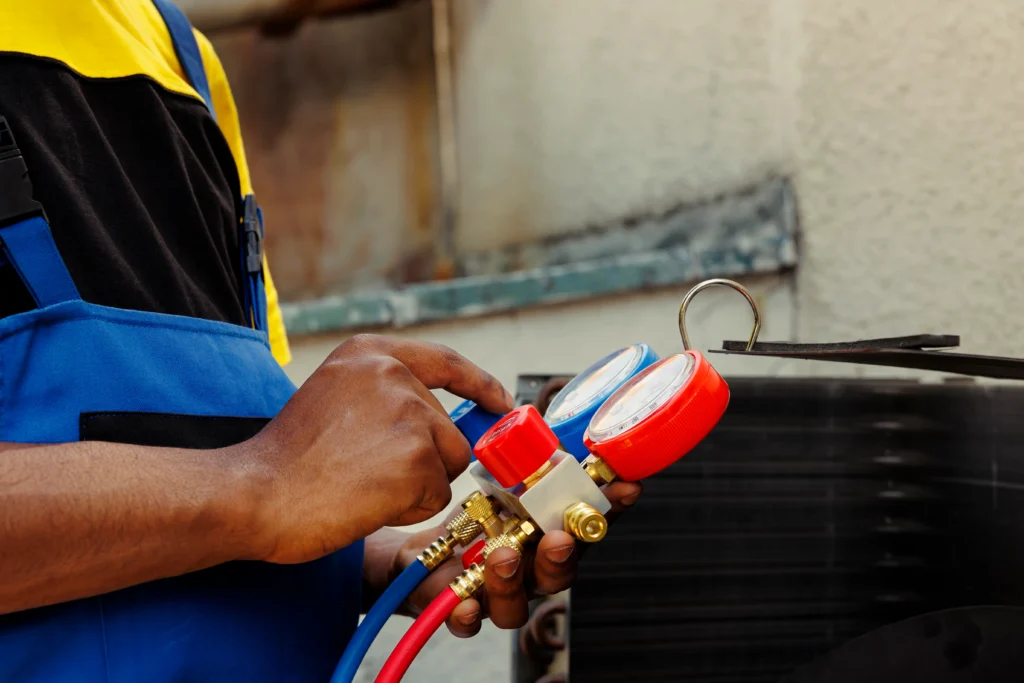
If you’ve ever been near an older compressor, you might recall the distinctive click and hum when it started, and the abrupt silence when it stopped. For decades, this was the soundtrack of industrial air systems, refrigeration plants, and HVAC units.
That sound came from a basic on/off control system. The compressor would run at full power until the system reached a target pressure or temperature, then shut off entirely. Simple, yes, but far from perfect.
The “all or nothing” approach caused pressure swings, wasted electricity, and placed unnecessary stress on components. It was a bit like driving your car by flooring the accelerator until you reached your speed, then slamming the brakes, over and over again. You’d get where you’re going, but the ride would be rough, inefficient, and hard on the vehicle.
Modern compressors have broken free from this crude cycle. They now operate with a far greater degree of intelligence and finesse, adjusting output smoothly to meet demand, keeping conditions stable, and saving energy in the process. One of the biggest reasons for this shift is the adoption of PID control.
The Old Way Control
The technical term for the classic on/off approach is “bang-bang control”, which is a name that perfectly captures its abrupt, binary nature. Here’s how it works:
- Pressure drops below a setpoint → compressor switches on at full power.
- Pressure rises above the upper limit → compressor switches off entirely.
It’s simple and inexpensive to implement. But in practice, it comes with significant drawbacks:
- Large pressure fluctuations — not ideal for processes that need stable supply.
- Short cycling — frequent starts and stops increase mechanical wear.
- Higher energy costs — starting motors repeatedly draws more current than running them steadily.
- Noise and vibration — each start/stop produces mechanical and acoustic impact.
In some industries, such as food packaging or precision manufacturing, these fluctuations aren’t just inconvenient, they can cause defective products or costly downtime.
The New Era – Smooth and Smart Control
To solve these issues, engineers developed smarter control methods. Research shows that compressors can account for about 10% of all industrial energy consumption, making stability and efficiency key targets. Modern compressors now use techniques such as:
- Load/unload control – Instead of shutting off entirely, the compressor runs at reduced load when demand is low.
- Variable speed drives (VSD) – The motor speed is adjusted to match the exact demand, greatly improving efficiency.
- PID control loops – These continuously fine-tune the compressor’s output, keeping conditions extremely close to target values.
These methods don’t just save electricity. They extend the compressor’s life, reduce noise, and make operation more predictable. In fact, a well-tuned modern control system can keep pressure variation within a narrow band compared with older on/off systems.
Spotlight on PID Control
So, what exactly is PID control and why is it so important in this shift?
PID stands for Proportional, Integral, Derivative — three mathematical elements that combine to deliver precise, stable control. In plain terms, it’s a system that is:
- Proportional – Reacts to the size of the error. If the pressure is far from the target, the control action is stronger.
- Integral – Looks at accumulated past errors to eliminate long-term drift. The only type of control that can reduce static error to zero.
- Derivative – Predicts future trends based on how quickly things are changing, preventing overshoot.
In compressors, the PID controller continuously compares the setpoint, which is desired pressure or flow, to the actual measurement. Based on the difference, it calculates a precise correction, adjusting motor speed, valve position, or load to keep the system in balance.
Let’s make an everyday analogy. Imagine you’re driving up a hill and trying to keep a steady 60 km/h. You press the accelerator more when you start slowing down, ease off when you start speeding up, and anticipate when to make adjustments so you don’t overshoot your target speed. That’s exactly what a PID controller does for a compressor, constant, measured adjustments to keep conditions steady.
The Real-World Impact of PID-Controlled Compressors
The difference between old and new control isn’t just theoretical, it’s quite measurable, so no wonder companies are investing to upgrade compressor control systems to save significant energy year-round.
- Energy efficiency gains – PID can cut energy use by avoiding overcorrection and unnecessary startups.
- Reduced wear and tear – Motors, valves, and bearings last longer when not subjected to constant on/off cycling.
- Consistent quality – In manufacturing, a stable air supply prevents product defects.
- Lower noise levels – Smooth operation means less mechanical shock and vibration.
Beyond PID – The Future of Compressor Control
PID remains the industry’s go-to method because it’s reliable, proven, and still relatively simple to implement. Research in industrial refrigeration systems found that combining load shifting with optimized compressor sequencing (a strategy that complements PID-style control) reduced compressor energy use by up to 20%, compared to optimal sequencing alone.
But the future is bringing even more advanced capabilities:
- IoT-enabled compressors – Remote monitoring, performance dashboards, and real-time alerts.
- Predictive maintenance – AI models that spot early signs of wear before failures occur.
- Self-tuning control systems – Adaptive algorithms that adjust PID parameters automatically for changing conditions.
- Plant-wide optimization – Integrating compressor control with other equipment to minimize total energy use.
These innovations build on the stable foundation that PID provides, but they take control precision and operational insight to the next level.
Final Takeaway
The days of compressors mindlessly switching on and off are over. Modern systems think, adapt and optimize, with PID control acting as the central nervous system. If your compressors are still running on the old bang-bang approach, you could be missing out on significant savings, longer equipment life, and improved reliability.
Upgrading to modern systems isn’t just about technology. It’s about taking proactive steps toward greater efficiency, reliability, and cost savings. By optimizing operations, plant managers and facility owners can reduce waste, extend equipment life, and ensure smoother performance across the board.
Whether through fine-tuning existing setups, integrating advanced PID loops, or adopting predictive analytics, every improvement brings you closer to consistent results and measurable returns.
In the end, you might not hear that familiar click anymore, but you’ll notice the difference.

Braxons Group: Liquidity Protocols for RWA and Yield Strategies — Bridging Real Assets with DeFi

Do I Need a Business License for My Ohio LLC

Unlocking Niche Audiences Through A Strategic Market Segmentation Service

Accelerating drug discovery through the DEL-ML-CS approach

AI in Marketing Is No Longer a Buzzword — It’s the Strategy

Why Modern Compressors Don’t Just Switch On and Off Anymore

iOS App Testing in 2025: Why Real Devices Still Matter More Than Simulators

Overcoming frustration in coding problem‑solving








